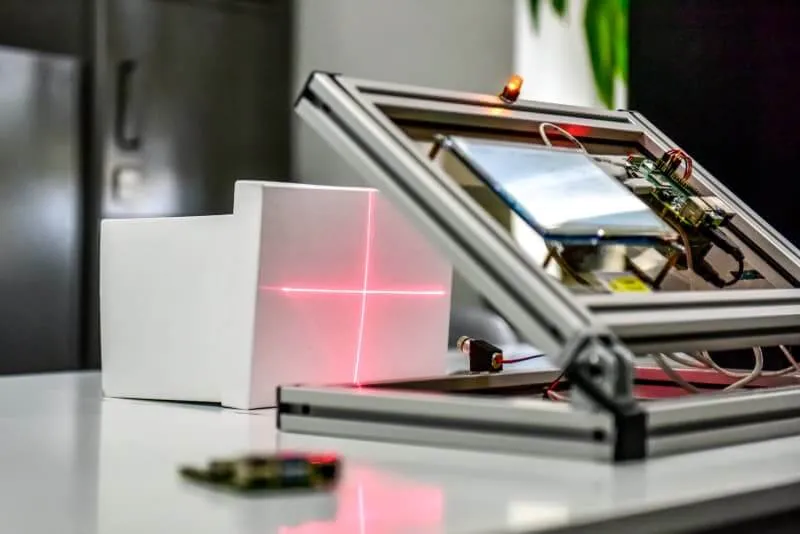Join us at Qt C++ Warsaw Meetup - 21.08.2025
Sign up for free!Embedded Application for Medical Laser Device
Application that works on embedded device and it purpose is to simulate the operation of a medical laser. The user can select one of the pre-prepared operations, or create their own with pre-set parameters. The application simulates the course of the procedure.
Technologies used
In the specialized realm of R&D for medical devices, selecting the right technologies and a partner capable of providing comprehensive support backed by proven expertise in the medical devices sector is a challenging process, particularly for those unfamiliar with the technical side. This case study explores the development of our embedded application for a medical laser device.
Medical Laser Device – Project Idea
We are a custom software and hardware development company, with 80% of our clients being medical device manufacturers or medical IoT startups. Our commitment to providing high-quality services is demonstrated by our ISO 9001:2015 and ISO 13485:2016 certifications. Leveraging our extensive experience in this field, we embarked on a demonstrative project that integrates both embedded hardware and software components. This project simulates the use of a laser, which is prevalent in medical applications such as surgeries and aesthetics.
Components
The project comprises both hardware and software elements. At the core of the system is a Raspberry Pi 4 single-board computer, which is ideal for demonstrative projects due to its affordability and customizable resources. While it is commonly used in commercial projects, it does have some limitations, such as environmental constraints.
Our device includes two diodes: a warning, blinking orange diode, and a red laser diode. An NPN transistor is used to regulate the power supply to the laser diode, and resistors are employed throughout the device to ensure safe operation.
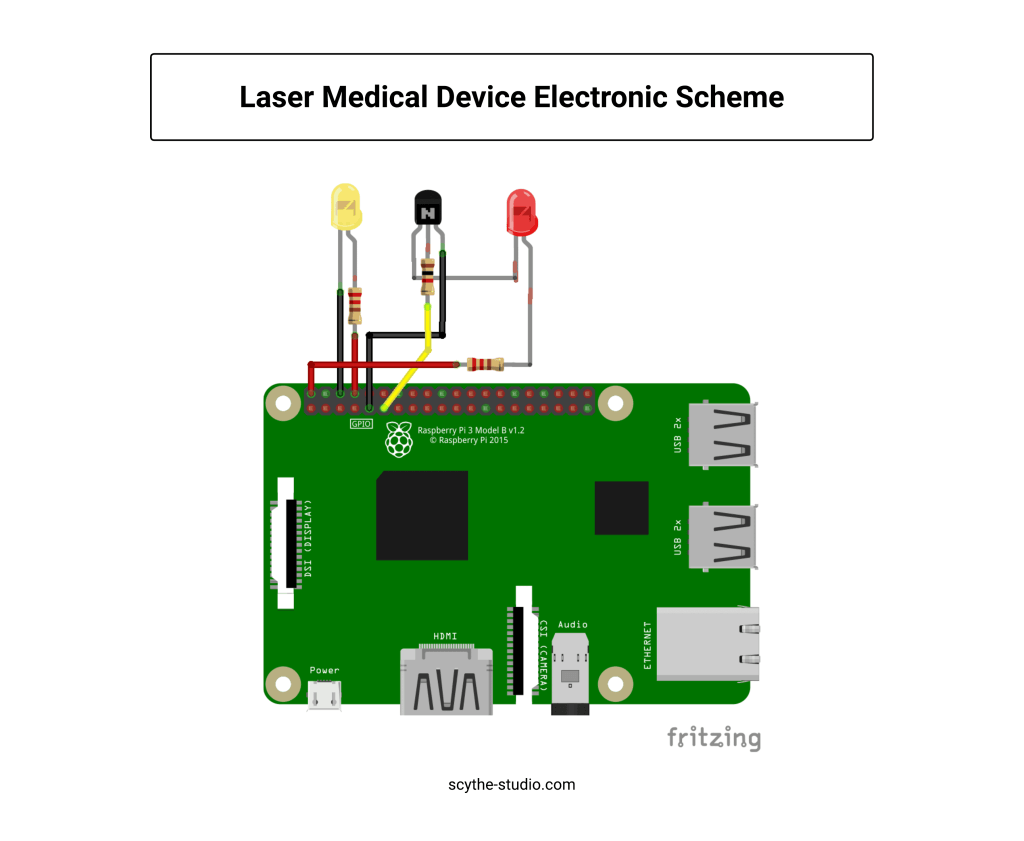
We utilized a standard 7-inch LCD display with a resolution of 1024×600 pixels in our design. This capacitive touch screen supports up to 5-point touch, enabling functionalities such as rotating a 3D model within the application using gestures.
We utilized a standard 7-inch LCD display with a resolution of 1024×600 pixels in our design. This capacitive touch screen supports up to 5-point touch, enabling functionalities such as rotating a 3D model within the application using gestures.
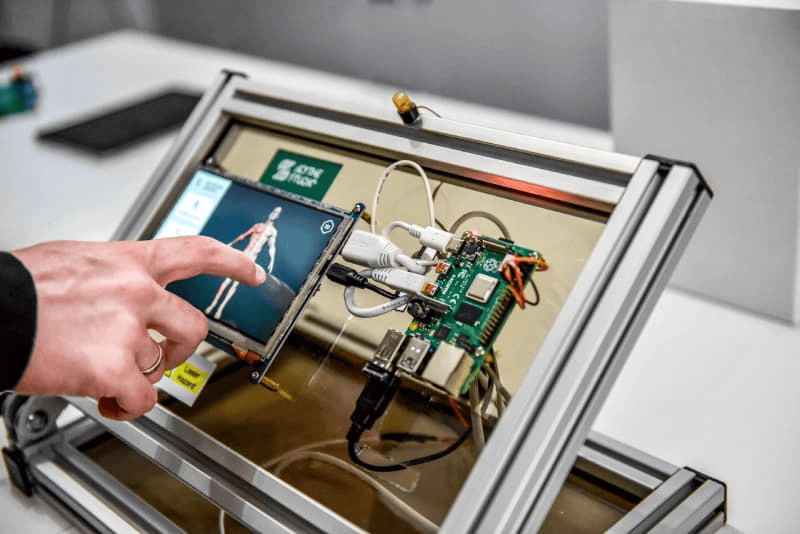
Functionalities
The software presents the 3D human body model that user can freely rotate and zoom to allow the user to look at the physiognomy before starting the actual procedure. These features were implemented using the fraction of powerful Qt Quick 3D module. It provides a high-level API for building 3D content and 3D user interfaces. It’s possible to mix Qt Quick 2D and 3D elements.
User can play choose one of predefined procedures or apply their own, custom procedure with parameters like duration, laser intensity and more. This feature was inspired by the real laserotherapy that one of the project originators had. There was indeed an option to either configure the parameters on your own or choose one of well-known, predefined options.
Eventually all leads to starting procedure during which laser operates according to applied parameters.
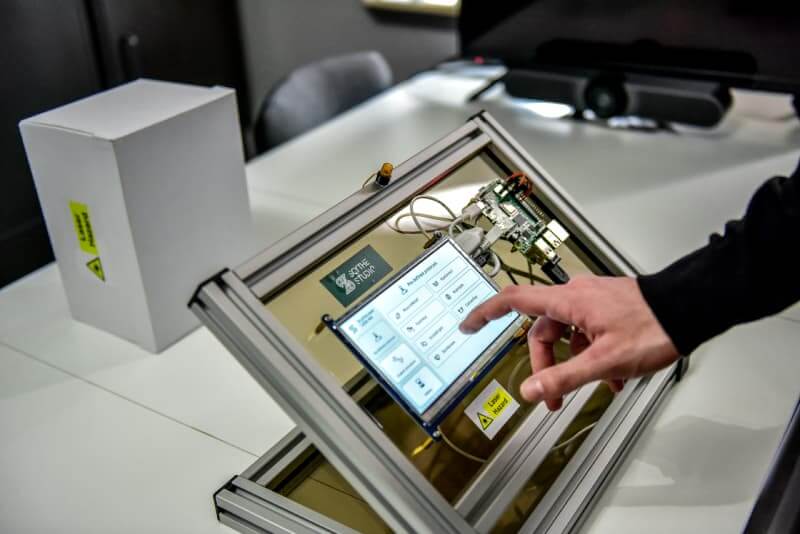
Medical Device Software Development with Qt
Qt is a stable and powerful toolkit that enables the creation of efficient applications with an attractive UI. At Scythe Studio, we use the Qt framework for several key reasons:
Outstanding performance
Qt’s core is based on the efficient C++ language, which enhances the performance and security of applications. This also allows developers to integrate other external C++ libraries.
Compliance with Medical Certification Standards
The Qt Safe Renderer module is suitable for life-sustaining and life-saving devices. TÜV NORD has certified that Qt Safe Renderer meets the requirements of IEC 62304:2015, IEC 61508:2010-3 7.4.4, and ISO 9001:2015.
Cross-Platform Compatibility
Qt enables the development of applications for multiple platforms, including Windows, iOS, Android, Linux, and embedded systems, using the same codebase. This reduces resource expenditure and accelerates the software development process.
Qt Safe Renderer
In the event of software failure, Qt Safe Renderer ensures critical information remains accessible to medical staff, working independently from the main application.
Efficient Development Process
Using the QML language, our developers can quickly adapt the application’s look to design changes. QML combines easily with C++ logic, resulting in a seamless, visually appealing design with a robust backend.
Ready-made modules
Qt offers numerous ready-to-use functionalities, such as 3D models, Bluetooth, OPC-UA, MQTT and more, which can be effortlessly integrated into existing code.
Cooperate With Us on Your Medical Project
Visit our medical devices software development page for detailed information about our services for the healthcare industry. We specialize in developing devices that integrate hardware, electronics, and advanced software. Most of our projects are SiMD (Software in a Medical Device), but we also develop SaMD (Software as a Medical Device) applications for mobile and desktop platforms, often including DICOM and PACS features.
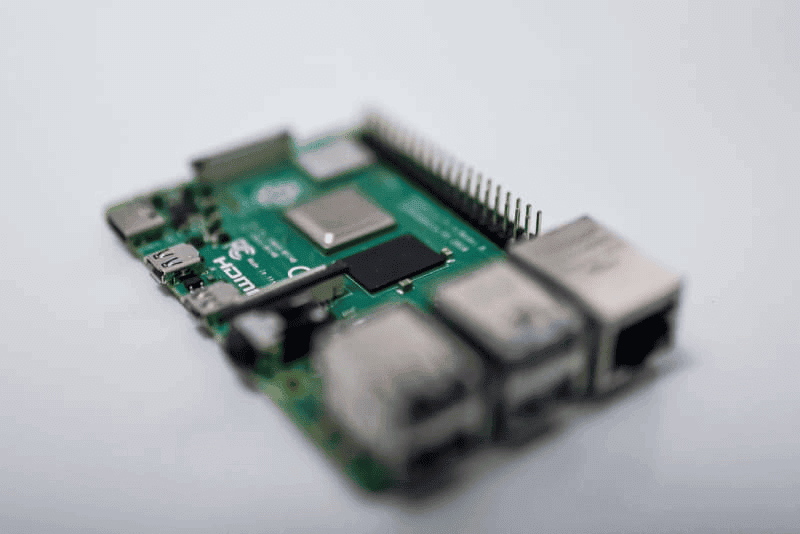
Build a Demo with Us: Offer for MCU Companies
We seek partnerships with MCU and MPU device companies to create innovative demos together. Contact us to explore potential collaborations and mutual benefits.
Recent projects
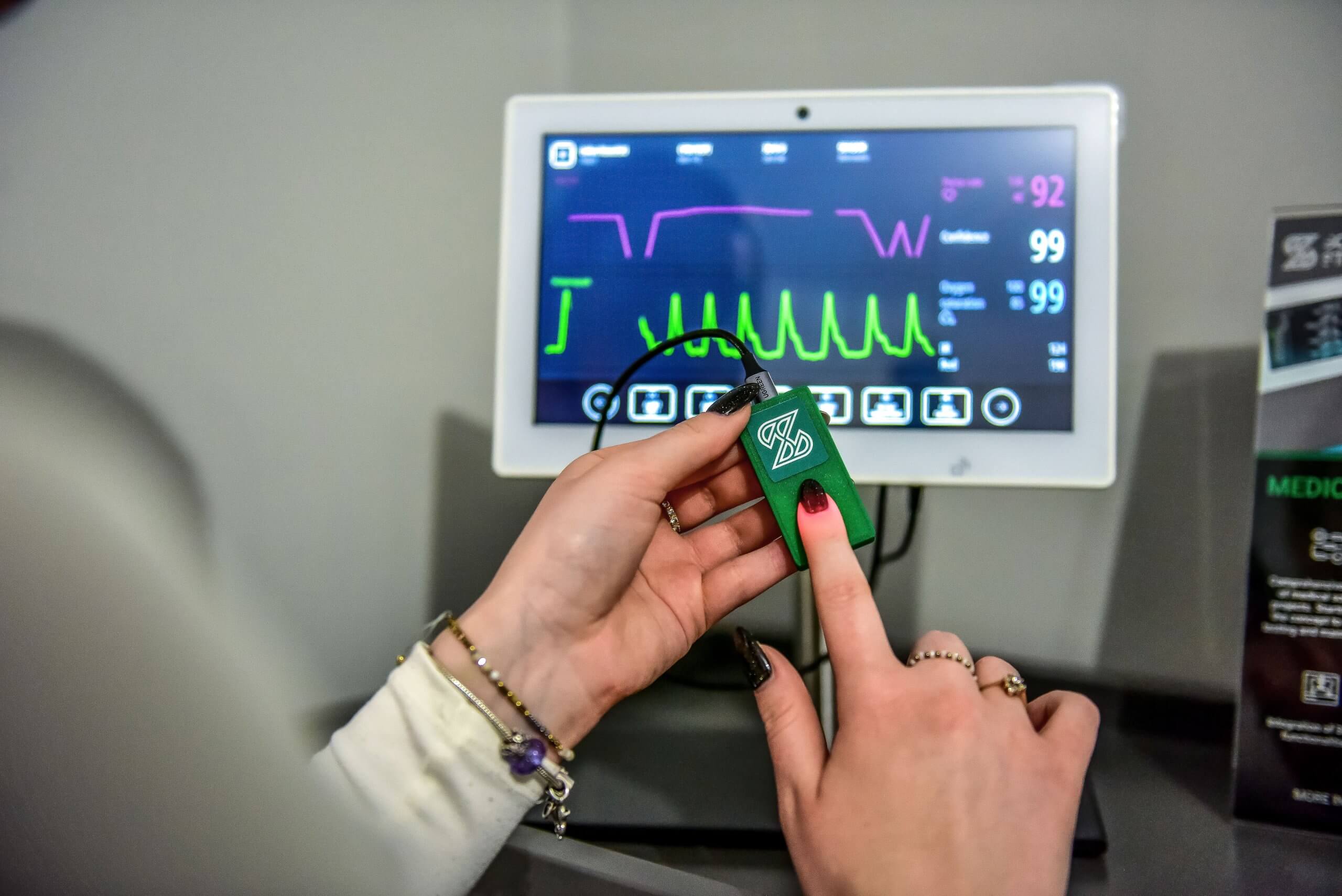
Patients Vital Parameters Monitor
The patient vital signs monitor features a pulse oximeter and heart rate sensor. It consists of a sensor and a microcontroller. It communicates with the sensor, gets data from it and sends it via a USB cable to a computer.
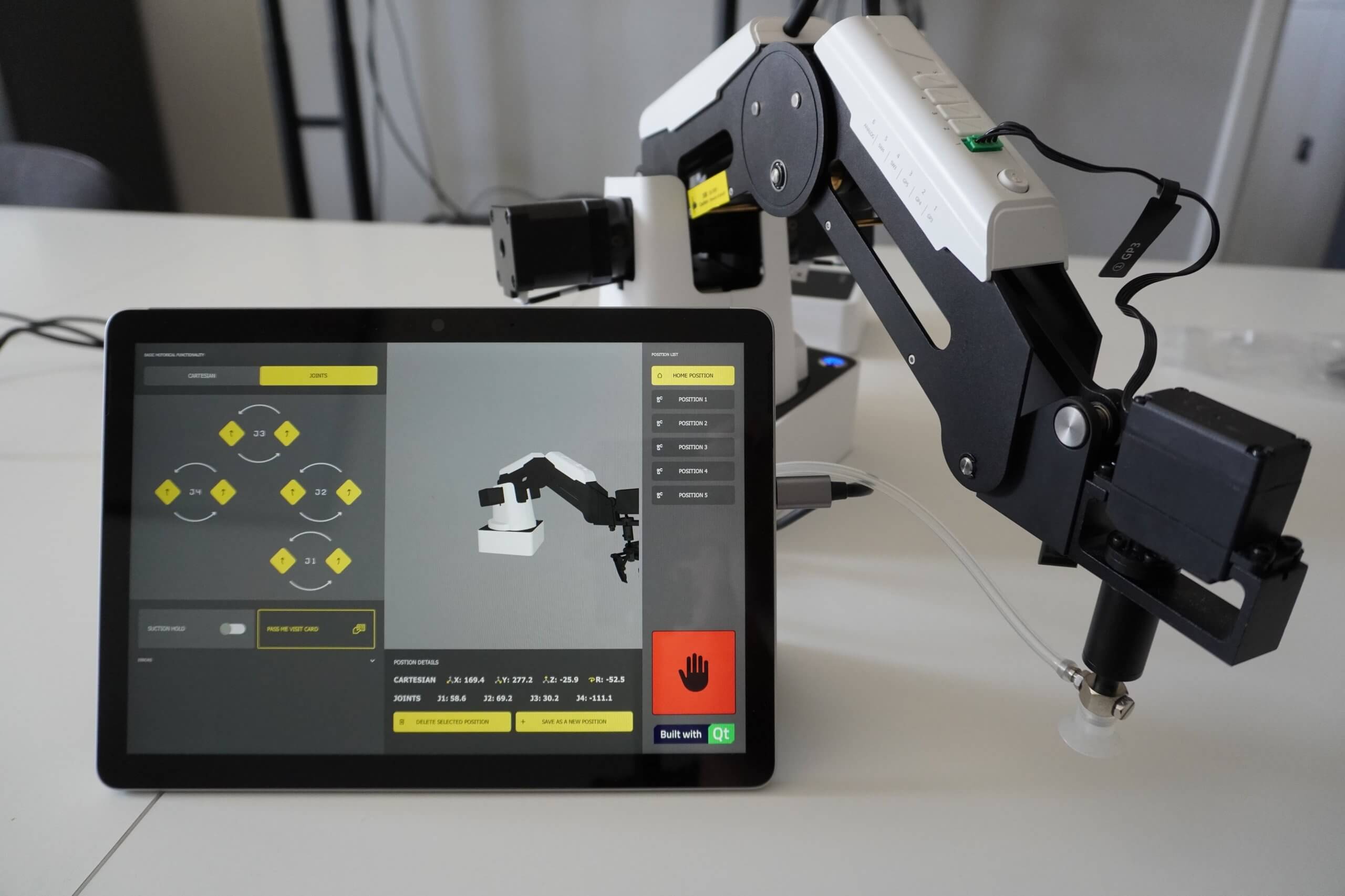
Robot Software – Digital Twin project
Cross-platform application designed to communicate with and control the Dobot Magician robotic arm. The operation of the robotic arm, is also assisted by a 3D model fully reflecting the position and alignment in real time of the physical model.
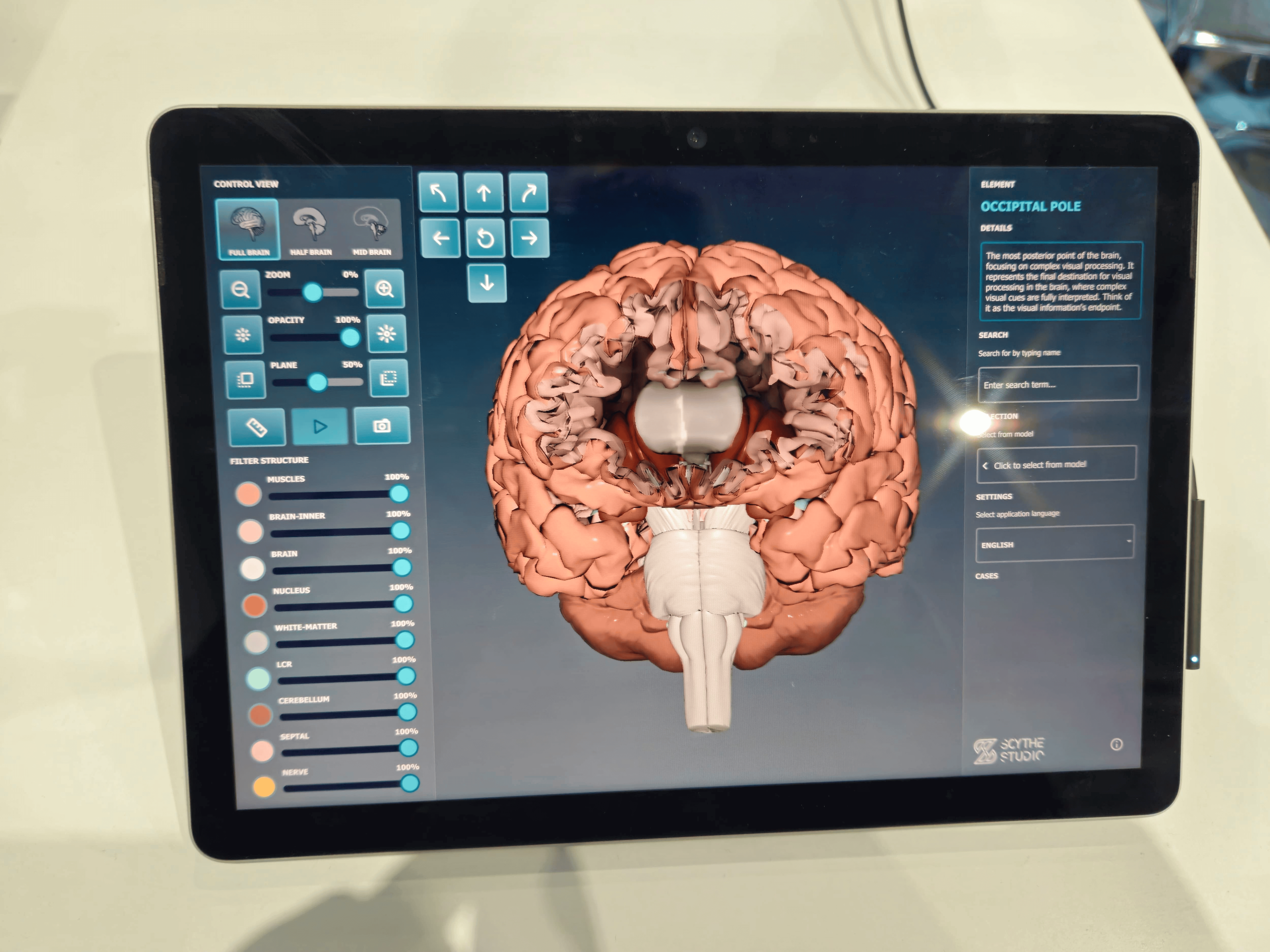
Brain Viewer – 3D model of human brain
Medical application used to present a 3D model of the human brain and display information about its specific parts. We wanted the design to be pleasing to the user's eye and allow to easily interact with interface.
